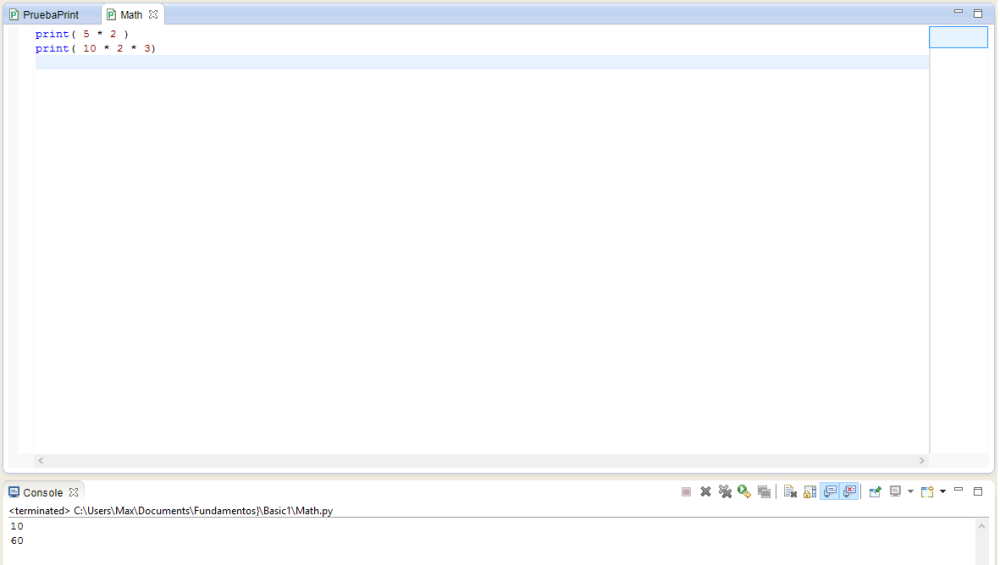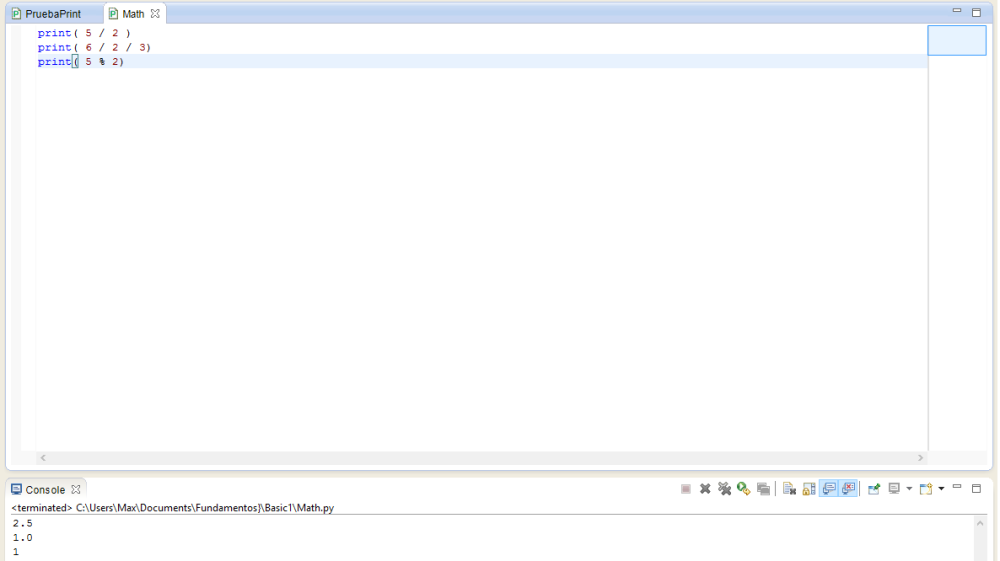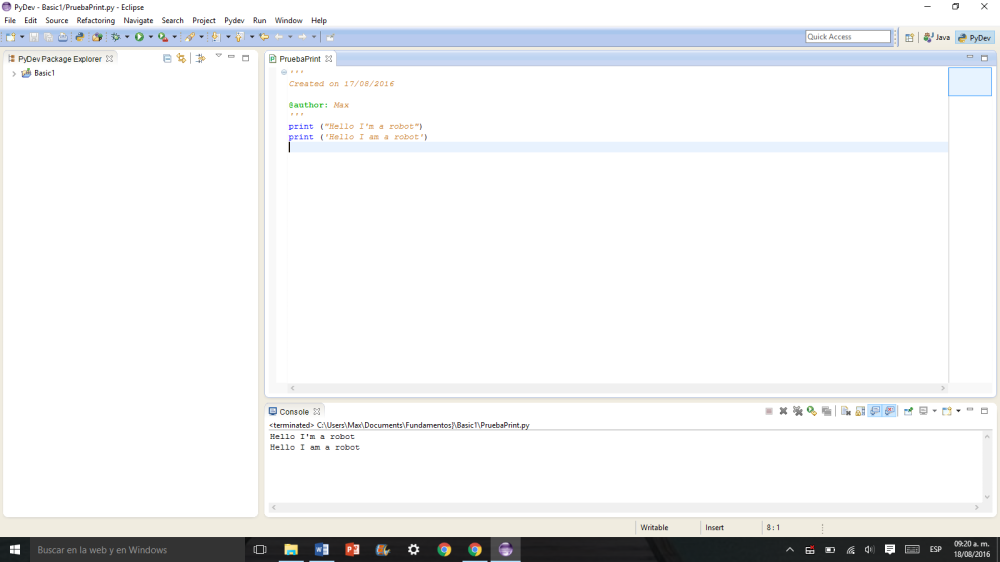--Originally published at Py(t)hon
Python has five standard types of data:
- Numbers
- Strings
- Lists
- Tuples
- Dictionary
The number type data is used to store numerical values, this are created when you assign a value to the object.
var1 = 5
var2= 15
Pythons support four different numerical types:
- int ( signed integers )
- long ( long integers, they can also be represented in octal and hexadecimal)
- float ( floating point real values)
- complex (complex numbers)
Some examples, for a clearer view:
| int | long | float | complex |
| 10 | 51924361L | 0.0 | 3.14j |
| 100 | -0x19323L | 15.20 | 45.j |
| -786 | 0122L | -21.9 | 9.322e-36j |
| 080 | 0xDEFABCECBDAECBFBAEl | 32.3+e18 | .876j |
| -0490 | 535633629843L | -90. | -.6545+0J |
| -0x260 | -052318172735L | -32.54e100 | 3e+26J |
| 0x69 | -4721885298529L | 70.2-E12 | 4.53e-7j |
In the other hand we have the String which are a set of values represented inside a quotation mark. Python allows either pairs of single or double. Subsets of the string can be made by a slice operator ([] and [:]). Every set starts at 0 to -1. You can include the sing (+) to add something else and the (*) to repeat that string a number of times. Here is an example for a better understanding:
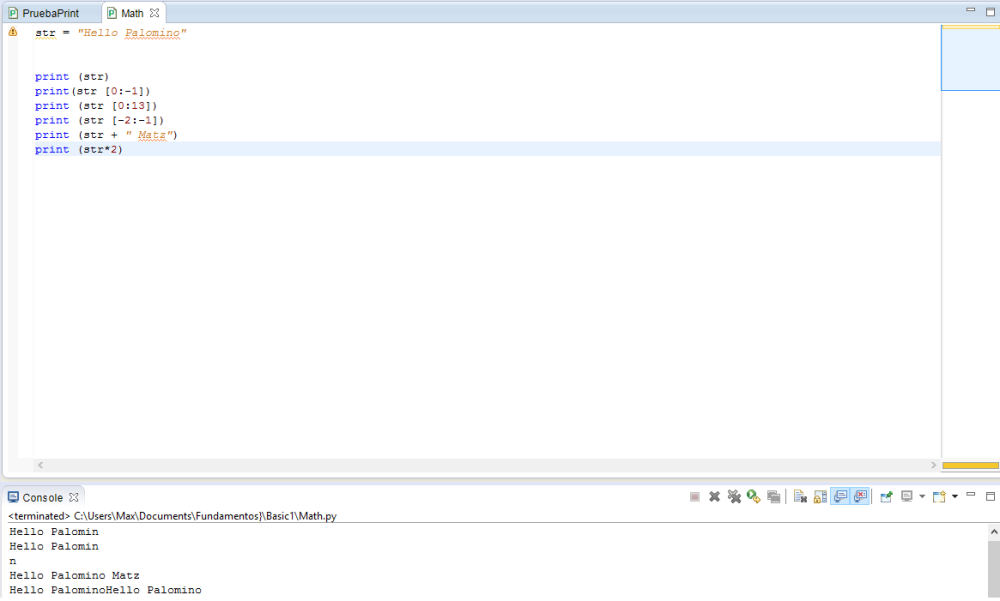
The next type is the list, where you will find items separated by commas and inside brackets, you can access to this list like the string but the difference is that it will appear the complete list of the place you chose, not only a letter or a value; also like the previous you can add something with the (+) and repeat the list with the (*) and example:
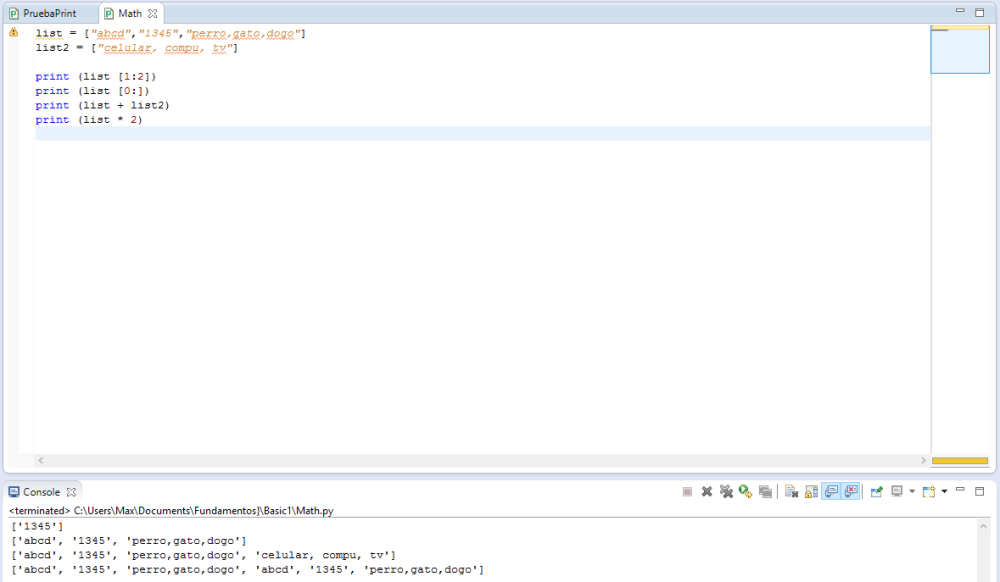
The tuples are very similar to the lists, but the main difference is that the tuples are enclosed between parenthesis and not brackets as the list, and another main point is that





